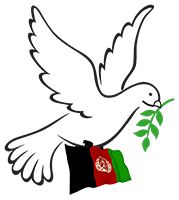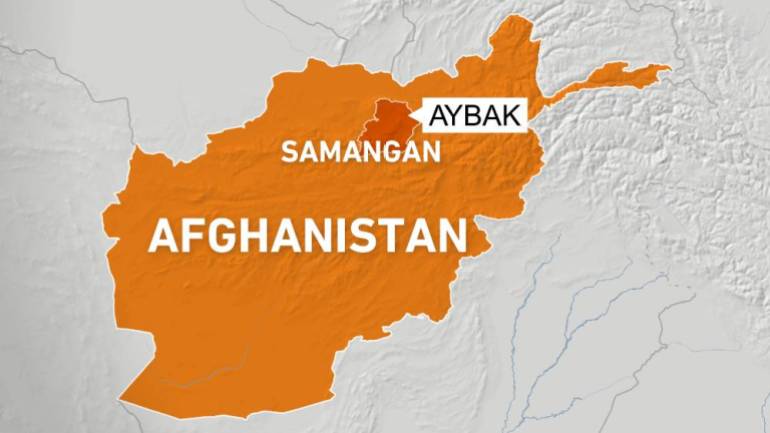Hina Rabbani Khar, Pakistan’s minister of state for foreign affairs, has met Afghanistan’s acting foreign minister Amir Khan Muttaqi in the capital Kabul amid tension over cross-border violence.
Tuesday’s visit comes a day after Tehreek-e-Taliban Pakistan (TTP) armed group ended a months-long ceasefire with Islamabad raising security concerns about Afghanistan-Pakistan border areas.
The TTP, also known as Pakistan Taliban, has been fighting the Pakistani state for more than a decade. The armed demands imposition of its readings of Islamic law and the release of its fighters among other issues.
The Pakistan Taliban, which is ideologically aligned with the Afghan Taliban, on Monday asked its fighters to launch attacks across the country. “As military operations are ongoing against mujahideen in different areas … so it is imperative for you to carry out attacks wherever you can in the entire country,” the group said in a statement.
Kabul and Islamabad were engaged in a war of words in April after Pakistan reportedly carried out deadly air raids inside Afghanistan following cross-border attacks blamed on the Pakistan Taliban.
Pakistan says the TTP finds safe haven in Afghanistan – a charge denied by the Taliban, which has been facilitating peace talks between the Pakistan Taliban and the Pakistan government.
‘Bilateral issues’
It was not clear whether security was discussed at the meeting between Khar and Mutaqqi – the first high-level Pakistani delegation to visit Kabul since Prime Minister Shehbaz Sharif took office in April. Former foreign minister Shah Mahmood Qureshi visited Kabul last October.
“A range of bilateral issues of common interest including cooperation in education, health, trade and investment, regional connectivity, people-to-people contacts and socioeconomic projects were discussed,” Pakistan’s foreign office said in a statement.
A statement from Afghanistan’s foreign ministry said Muttaqi had also brought up accelerating trade and transit and facilities for travellers between the two countries as well as the release of Afghan prisoners in Pakistan.
Pakistan this month reopened the Chaman border – a major crossing connecting Balochistan to the Afghan province of Kandahar – which was shut down in the wake of clashes between security forces from the two sides.
The Chaman border in the southwest and the northwestern Torkham border connects landlocked Afghanistan to neighbouring Pakistan. They have served as the main trade and transit routes between the two countries.
Taliban faces diplomatic isolation
Pakistan has not officially recognised the Taliban government, which faces diplomatic isolation for more than a year and a half since it took power.
No country has recognised the Taliban, who took over Afghanistan with a speed and ease that took the world by surprise, following which President Ashraf Ghani fled the country and his government collapsed, in August 2021.
The international community has pressured the Taliban to lift curbs on women and make the government more inclusive if the question of its recognition could be brought to the table.
But the Afgan rulers have doubled down on its restrictions on women, reversing a promise to open high schools for girls in March and gradually imposing curbs on women’s movement and their employment.
The Taliban have said they respect women’s rights in line with their vision of Islam and Afghan culture. Though their interpretation of Islamic law has often been considered more hardline.
The UN special rapporteur on human rights in Afghanistan said Friday that Taliban restrictions on women and girls could amount to a “crime against humanity”.
The high-level meeting comes on a day General Asim Munir on Tuesday took charge as Pakistan’s new army chief, a key change of command in an institution that plays a hugely influential role in the governance of the nuclear-armed nation.
Munir, who was named as the new chief last week, takes control at a time when the army has been drawn into a political showdown between the government and former Prime Minister Imran Khan, even as the country faces an economic crisis.
“I am certain that his [Munir’s] appointment will prove positive for the army and the country,” outgoing chief General Qamar Javed Bajwa said at a handover ceremony at the army’s General Headquarters in the garrison city of Rawalpindi.
Bajwa, who served as chief for six years, has recently drawn the ire of Khan and his supporters, who claimed that the army played a part in his removal from the premiership in April in a no-confidence vote. The army has denied any role.
Khan, meanwhile, has said he would continue with his campaign to press the government to hold early elections. He has also threatened to dissolve provincial assemblies under his party’s control, which could lead to a constitutional crisis.
Munir faces a new security challenge in the wake of the Pakistani Taliban walking out of the truce.
 Afghanistan Peace Campaign
Afghanistan Peace Campaign

